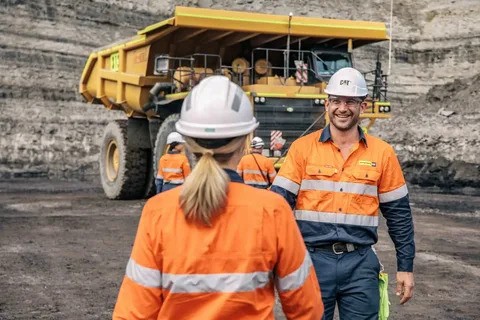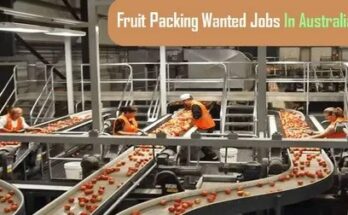Australia Mining Jobs
Australia’s mining industry is the engine of its economy, contributing over 14% of GDP and employing more than 280,000 workers. From the iron ore-rich Pilbara region to the coal basins of Queensland and the goldfields of Western Australia, the sector is synonymous with innovation, high wages, and global influence. As the world’s top producer of iron ore, lithium, and gold—and a critical player in the renewable energy transition—Australia’s mining industry offers lucrative careers for skilled professionals, tradespeople, and newcomers.
This comprehensive guide explores the landscape of mining jobs in Australia, including key roles, regional opportunities, required qualifications, immigration pathways, and how this dynamic sector is adapting to technological and environmental challenges.
Why Australia’s Mining Sector is a Global Powerhouse
- Resource Wealth:
Australia holds the world’s largest reserves of iron ore, lithium, gold, and uranium, along with significant coal, copper, and rare earth deposits. - Global Demand:
- Iron Ore: Supplies steel mills in China, Japan, and South Korea.
- Lithium: Powers the electric vehicle (EV) revolution (Australia produces 55% of global supply).
- Coal: Thermal and metallurgical coal remain key exports despite decarbonization efforts.
- Technological Leadership:
Automation, drones, and AI-driven analytics position Australia as a pioneer in “smart mining.” - Government Support:
Pro-mining policies, tax incentives, and streamlined approvals for critical mineral projects. - Labor Shortages:
Over 24,000 mining jobs were vacant in 2023, with shortages in engineers, heavy machinery operators, and geologists.
Types of Mining Jobs in Australia
The industry offers diverse roles across exploration, extraction, and processing:
1. Operational Roles
- Drill Operators: Conduct exploration or production drilling.
- Average Salary: 120,000–180,000 AUD/year.
- Haul Truck Drivers: Operate 400-ton dump trucks in open-pit mines (FIFO roles).
- Average Salary: 110,000–150,000 AUD/year.
- Blast Crew: Handle explosives for rock fragmentation.
- Certifications: Shotfirer license required.
2. Technical and Engineering Roles
- Mining Engineers: Design mine layouts and optimize extraction.
- Average Salary: 140,000–220,000 AUD/year.
- Geologists: Identify mineral deposits and oversee exploration.
- Average Salary: 130,000–200,000 AUD/year.
- Metallurgists: Manage ore processing and refining.
3. Trades and Maintenance
- Electricians: Maintain high-voltage systems in processing plants.
- Average Salary: 110,000–160,000 AUD/year.
- Heavy Diesel Mechanics: Service mining trucks and excavators.
- Average Salary: 120,000–170,000 AUD/year.
4. Health, Safety, and Environment (HSE)
- Safety Advisors: Enforce protocols to prevent accidents.
- Average Salary: 130,000–190,000 AUD/year.
- Environmental Scientists: Mitigate ecological impacts and ensure compliance.
5. Leadership and Management
- Site Managers: Oversee daily operations and budgets.
- Average Salary: 200,000–400,000 AUD/year.
- Project Managers: Lead mine expansions or new developments.
Regional Hotspots for Mining Jobs
1. Western Australia (WA)
- Pilbara: Epicenter of iron ore mining (BHP, Rio Tinto, Fortescue).
- Goldfields: Super Pit in Kalgoorlie (largest open-pit gold mine).
- Lithium: Greenbushes Mine (world’s largest hard-rock lithium source).
2. Queensland (QLD)
- Bowen Basin: Coal mining for export (Glencore, BMA).
- Copper: Mount Isa Mines.
3. South Australia (SA)
- Olympic Dam: BHP’s uranium, copper, and gold operation.
- Roxby Downs: Expanding critical mineral projects.
4. New South Wales (NSW)
- Hunter Valley: Thermal coal mines (Yancoal, Glencore).
- Cadia Valley: Gold and copper production.
5. Northern Territory (NT)
- Ranger Uranium Mine: Transitioning to rehabilitation.
- Tanami Gold Mine: Remote site operated by Newmont.
How to Secure a Mining Job in Australia
1. Education and Certifications
- Degrees: Mining engineering, geology, or metallurgy (Curtin University, UNSW).
- Trade Qualifications: Cert III in Mining (electrical, mechanical).
- Licenses:
- HR License: For heavy machinery.
- Standard 11: Mandatory safety induction for QLD mines.
2. Gain Experience
- FIFO (Fly-In-Fly-Out) Roles: Entry-level positions in remote sites (2 weeks on/1 week off).
- Apprenticeships: Combine paid work with training (e.g., Thiess, Downer Group).
3. Leverage Immigration Pathways
- Skilled Occupation List (SOL): Mining engineers, geologists, and electricians are prioritized.
- Employer-Sponsored Visas: Temporary Skill Shortage (TSS) or Regional Sponsored Migration Scheme (RSMS).
- Global Talent Visa: For high-impact professionals in critical minerals.
4. Apply Through Mining Job Portals
- Seek, Indeed, or specialized sites like Mining People International.
Challenges in the Mining Industry
- Remote Work Conditions: FIFO roles strain work-life balance.
- Environmental Pressures: Scrutiny over emissions, water use, and land rehabilitation.
- Market Volatility: Commodity price swings (e.g., iron ore dropping from 200to100/ton).
- Health Risks: Exposure to dust, noise, and hazardous chemicals.
The Future of Mining in Australia
- Automation and AI:
- Driverless trucks (Rio Tinto’s AutoHaul) and robotic drill rigs.
- Digital twins for real-time mine monitoring.
- Decarbonization:
- Hydrogen-powered haul trucks (Fortescue’s Green Fleet).
- Solar/wind farms replacing diesel at remote sites (e.g., Agnew Gold Mine).
- Critical Minerals Boom:
- Lithium, cobalt, and rare earths for batteries and renewables.
- Government’s $2B Critical Minerals Fund to boost production.
- Workforce Diversity:
- Initiatives to recruit more women (currently 19% of mining workforce) and Indigenous workers.
Why Choose a Mining Career in Australia?
- Top-Tier Salaries: Earn 2–3x the national average wage.
- Global Opportunities: Skills transferable to Canada, Chile, or Africa.
- Adventure: Work in iconic locations like the Outback or Kimberley.
- PR Pathways: Priority visas for skilled mining professionals.
Australia Mining Jobs
Mining jobs in Australia are more than just a paycheck—they’re a passport to a high-octane career in a sector that shapes global markets and technological progress. Whether you’re a geologist hunting for the next lithium deposit, a diesel mechanic keeping mega-machines running, or an environmental specialist ensuring sustainable practices, the opportunities are as vast as the Australian landscape. With competitive salaries, cutting-edge innovation, and a focus on the green energy transition, there’s never been a better time to dig deep and build a future in Australia’s mining industry.
Drill. Discover. Prosper.
FAQ Section
- Do I need Australian qualifications to work in mining?
Yes—trade certifications and site-specific licenses (e.g., Standard 11) are mandatory. - Are FIFO jobs family-friendly?
Rosters vary (e.g., 2:1 or 4:1), but long stints away can be challenging. - Is mining environmentally sustainable in Australia?
Companies face strict regulations, but renewable integration is accelerating. - Can I immigrate without a job offer?
Skilled Independent Visa (subclass 189) allows PR for eligible occupations without sponsorship. - Are apprenticeships paid?
Yes—mining apprentices earn 70,000–100,000 AUD/year while training.



